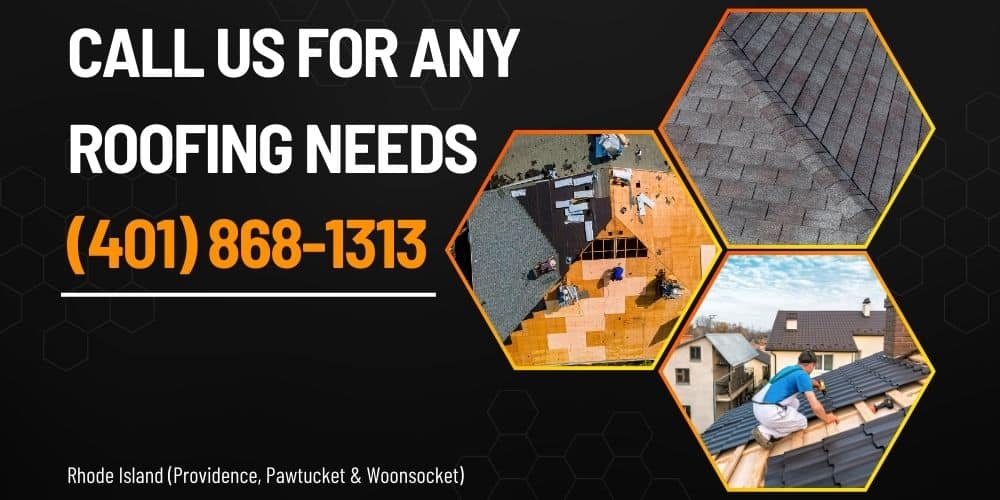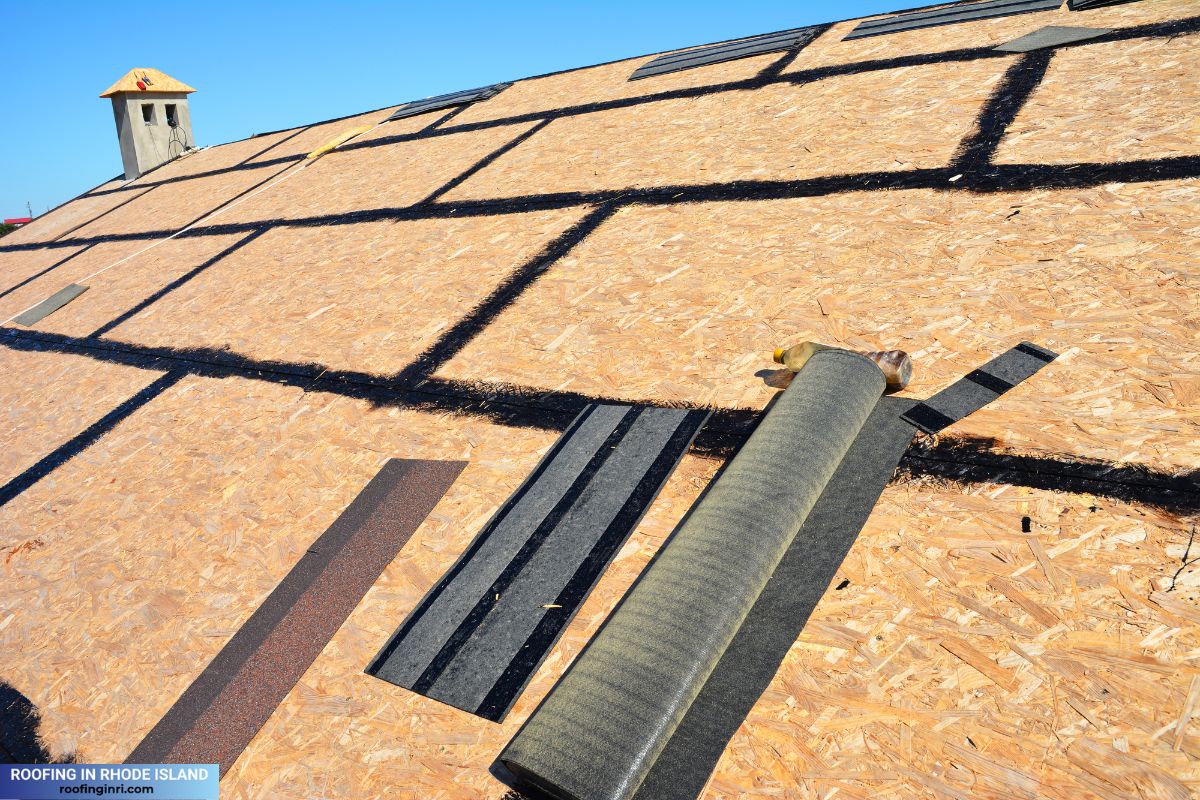Roof decking or sheathing is a critical component of any roofing system. It serves as the foundation that supports the roof’s outer layers, such as shingles, metal panels, or tiles.
Despite being out of sight, roof decking maintains structural integrity and ensures your roof performs well for years.
In this post, I will explain-
- Roof decking
- Available types
- The signs it needs replacement
- Why it’s essential for your roofing system.
What is Roof Decking?
Roof decking is a layer of flat boards attached to your roof’s trusses or joists. It is the base for roofing materials, providing stability and a nailing surface for shingles or other coverings.
Without a solid decking, the entire roofing structure could fail, leading to leaks, sagging, or even collapse.
Roof decking is made from durable materials designed to withstand weather, weight, and the passage of time. However, its lifespan is not infinite, and it can be damaged due to moisture, pests, or aging.

Read also: What is a drip edge on a roof?
Types of Roof Decking
Different materials are used for roof decking, each with unique characteristics. The choice of material depends on your roof design, budget, and climate conditions.
Plywood
Plywood is one of the most common materials for roof decking. It consists of thin wood layers glued together to form a strong, lightweight panel.
- Advantages: Cost-effective, durable, and easy to work with.
- Disadvantages: Vulnerable to moisture if not sealed properly.
Oriented Strand Board (OSB)
OSB is a type of engineered wood made from compressed layers of wood strands or flakes bonded with adhesives. These strands are arranged in specific orientations for strength and durability. Due to its affordability, versatility, and structural reliability, OSB is commonly used in roofing, wall sheathing, and flooring.
- Advantages: Resistant to bending, widely available, less expensive than plywood.
- Disadvantages: More prone to water damage if exposed for extended periods.
Tongue and Groove Decking
This type of decking is commonly used for roofs with open ceilings where the decking is visible. It consists of wooden planks with interlocking edges.
- Advantages: Aesthetic appeal, sturdy construction.
- Disadvantages: Higher cost and labor-intensive installation.
Metal Decking
Metal decking is typically used in commercial or industrial buildings. It provides excellent durability and fire resistance.
- Advantages: Long lifespan, resistant to weather and pests.
- Disadvantages: Expensive and less common in residential roofing.
Concrete Decking
Concrete decking is another option, often used in flat or low-slope roofing systems.
- Advantages: Extremely durable, fire-resistant, and low maintenance.
- Disadvantages: Heavy and expensive, requiring specialized installation.

Read also: What causes icicles to form on gutters?
When You Should Replace Roof Decking?
You should replace decking in the following circumstances:
- Water Damage: If you notice visible water stains, mold, or rot on the ceiling or attic, it could indicate water damage to the roof decking.
- Sagging: It’s clear indication of weakened decking. It’s caused by prolonged exposure to moisture or structural stress.
- Leaks During Rain: Persistent leaks might mean your roof decking has become compromised and can no longer support the waterproof layers.
- Holes or Cracks: Visible holes, cracks, or warped sections in the roof decking are strong signs it needs to be replaced.
- Aging: If your roof is approaching its lifespan, inspect the decking as part of the replacement process. Even if it looks intact, wear and tear could compromise its integrity.
Read also: What are alternatives to replacing your shingle roof?
Why Roof Decking Matters
Roof decking plays a vital role in your home’s safety and energy efficiency:
- Structural Support: It provides the necessary base to hold shingles, tiles, or metal panels in place.
- Insulation and Energy Efficiency: Properly installed decking prevents air leaks and improves insulation.
- Protection Against Weather: A solid decking layer enhances the roof’s resistance to extreme weather conditions.
- Improved Lifespan of Roofing Materials: Durable decking ensures shingles or other materials stay in good condition longer.
Common Issues with Roof Decking
Even the most robust decking materials can face issues:
- Moisture Damage: Prolonged exposure to water leads to rot and weakening.
- Pest Infestation: Carpenter ants, termites, and other pests can weaken the structure of the decking by eating away at the material.
- Improper Installation: Poor workmanship during installation can lead to long-term problems.
- Aging: Over time, even the best materials degrade, reducing their effectiveness.
Read also: A guide to choosing the best roofing warranty
The Cost of Roof Decking Replacement

The cost of replacing roof decking varies based on the material and the extent of damage. On average:
- Plywood/OSB: $3–$6 per square foot (including labor).
- Tongue and Groove: $5–$10 per square foot.
- Metal/Concrete: Costs are significantly higher due to material and installation complexity.
Additional costs include removing the old decking and any structural repairs needed.
Read also: How much does a new roof cost?
Maintaining Roof Decking
You can extend the decking’s lifespan by regularly inspecting and maintaining it.
- Inspect Regularly: Schedule annual inspections to catch early signs of damage.
- Seal Roof Leaks: Address leaks promptly to prevent water from reaching the decking.
- Ventilate Your Attic: Proper ventilation reduces moisture buildup.
- Trim Overhanging Branches: Minimize the risk of falling debris damaging your roof.
Read also: The role of gutter systems in protecting your roof.
Contact Us to Replace Your Roof Decking
Roof decking may not be visible, but it’s a cornerstone of your roofing system. Choosing the right materials, addressing damage early, and ensuring proper installation can protect your home from costly repairs and extend the life of your roof.
If you suspect issues with your roof decking or are considering a roof replacement, contact us for an inspection. Call us at (401) 868-1313.
Ensuring your roof decking is in good shape today can save you from significant headaches tomorrow.
Ready to elevate your home’s protection and curb appeal? Call us at (401) 868-1313 today for expert roofing solutions in Rhode Island (Providence, Pawtucket & Woonsocket) – because your roof deserves the best care it can get!




